If you plan on bleaching your hair or have already done so, you may wonder how to maintain your freshly bleached hair while caring for its health.
Bleaching is the most aggressive of the hair-coloring processes, as it causes significant damage to the hair shaft and alters the natural texture of your locks.
Even if you choose a skilled stylist who expertly bleaches your hair to lighten it, your strands will still require extensive care and attention post-bleaching.
Why Bleached Hair Needs Special Care?
The bleaching process is highly chemical-intensive, stripping away natural oils and moisture from the hair. This process breaks down hair proteins and weakens the hair structure, making it more prone to damage, dryness, and breakage.
The texture changes often result in the hair becoming more prone to tangling and frizz, requiring specific treatments to manage these issues.
Additionally, bleached hair often becomes more porous compared to unbleached hair. This increased porosity means it can absorb and release moisture much faster, leading to quicker color fading and further contributing to a brittle and unhealthy texture.
Therefore, special care is needed to restore and maintain the hair’s moisture balance, strength, and overall health, as well as to protect its color and shine.
How to Keep Your Bleached Hair Healthy
As a hairstylist, I suggest to my clients (who opt for lightening their hair with bleach) to divide the post-bleaching hair care routine into these 4 primary steps:
- Protect your bleached hair from additional damage.
- Use the right products on your bleached hair.
- Nourish and repair the bleach damage.
- Get regular trims for your bleached hair.
So, first of all, you will have to prevent additional damage to your bleached hair and the last step is to trim the hair regularly so the bleached hair portion will be eventually replaced by new hair growth.
Now, I will elaborate on each of these steps so that you can clearly understand how to take care of your bleached hair.
#1. Protect Your Bleached Hair from Additional Damage
After you have bleached/lightened your hair, protect your hair from additional damage. This damage can be caused by environmental factors or simply by your styling process.
Here are several things that can further damage your bleached hair and suggestions on how to minimize the damage:
Damage from Hard Water
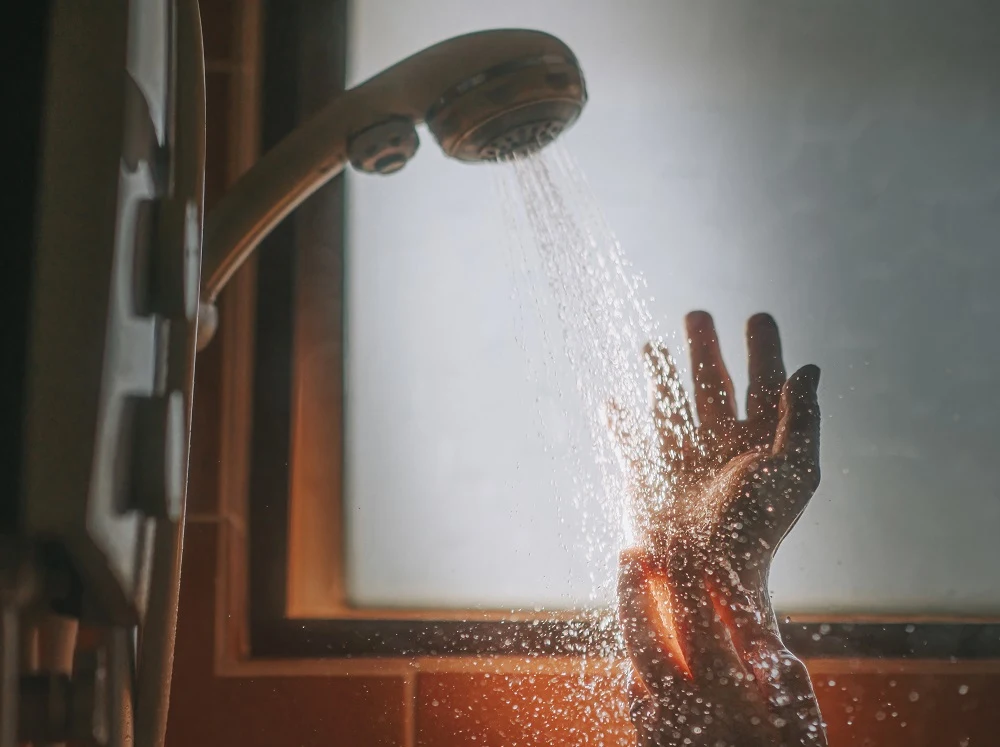
Depending on where you live and what your water source is, you may have hard water. According to USGS,
Hard water is high in dissolved minerals, largely calcium and magnesium. Depending on the hardness of your water, after using soap to wash you may have felt like there was a film of residue left on your hands. When using hard water, more soap or detergent is needed to get things clean, be it your hands, hair, or your laundry.”
– USGS
The minerals that can build up on your hair can cause your locks to become weighed down, dry, and brittle. When hard water causes buildup on your hair, it is more difficult for any conditioners or moisturizing products to penetrate that barrier.
But all of that can be avoided by simply putting a hard water filter on your shower head. Personally, I bought mine on Amazon, and I absolutely love it.
Damage from Chlorine
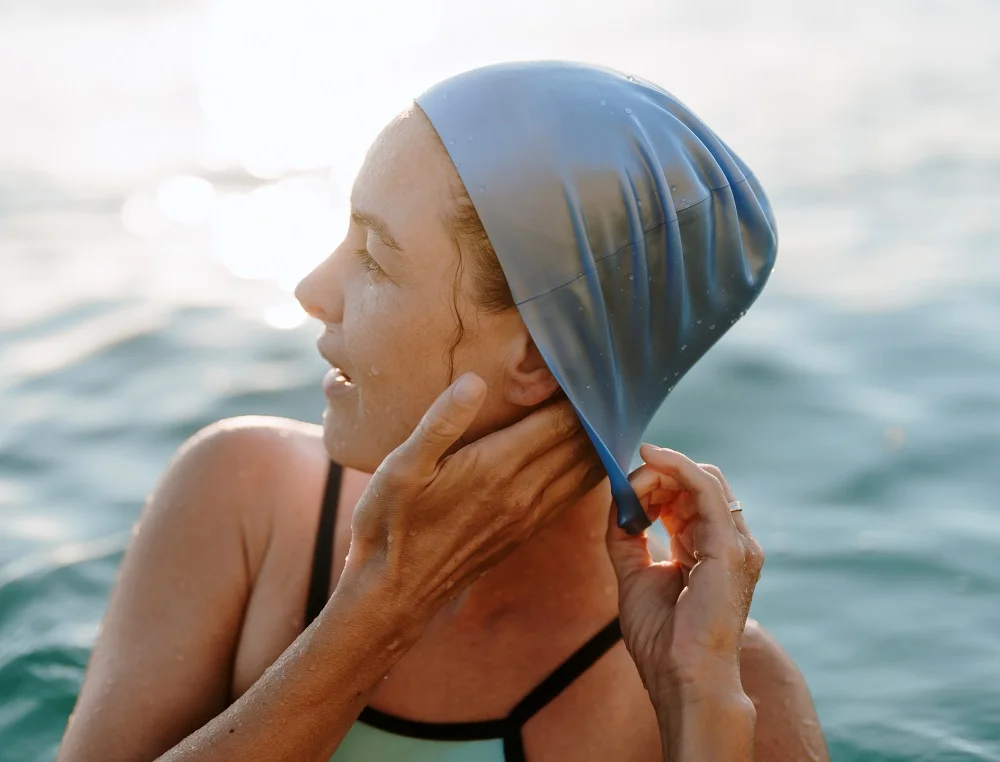
Chlorine can be intensely drying and damaging to your already fragile hair, leaving it susceptible to split ends and breakage. It can also alter the color of your hair. Have you ever seen a person with light blonde hair after a day of swimming in the pool? Chances are that their hair has a greenish hue. (I know this because it has happened to me.)
If you are an avid swimmer, don’t despair! You can do several things to protect your lightened hair from the damaging effects of chlorine. The most effective thing you can do is wear a swimcap.
This will prevent your hair from touching chlorine in the first place. If a swim cap is unavailable, soak your hair with regular tap water before entering the pool.
Because your hair is already soaked with water, it will absorb less of the highly chlorinated pool water. Of course, thoroughly shampoo and condition your hair after exposing it to pool water.
Damage from Excess Heat
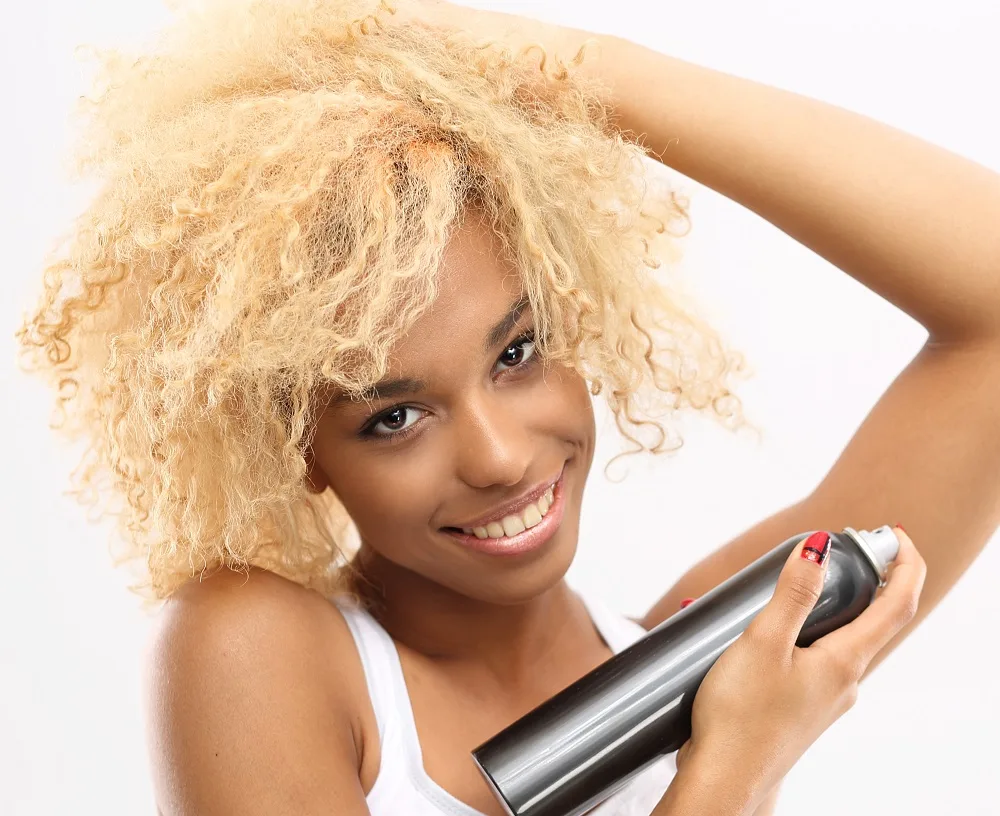
Excessively styling your hair with heat can be damaging even if you don’t have bleached hair, but it is especially damaging if you do. Minimize the frequency and intensity of heat you use to style your hair.
If you need heat to achieve your ideal style, apply a good quality heat protectant beforehand. Heat protectants usually come in the form of creams or sprays and can be very helpful in minimizing heat damage.
Another tip is to avoid using the highest heat setting. Start at a lower setting and work your way up if needed.
Damage While You Sleep
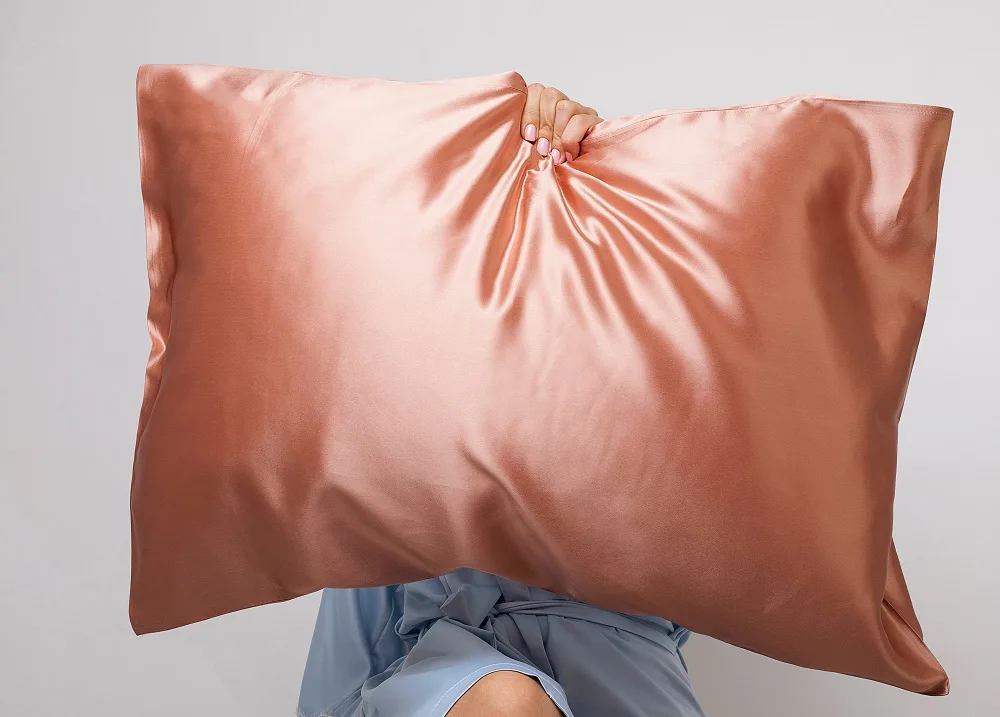
You might be thinking, “How is it possible that my hair is getting damaged while I am asleep? I’m not doing anything!” Simply put, the friction of your hair rubbing against the pillow as you sleep can create frizz and breakage, especially for chemically processed or bleached hair.
Fortunately, this problem comes with an easy solution. Using a satin/silk pillowcase and/or wearing a satin/silk bonnet when you sleep will minimize friction and, therefore, protect your hair from damage.
You will also probably notice a difference in how your hair looks in the morning. Chances are you won’t have to spend as much time or use as much heat for styling your hair as you did before.
#2. Use the Right Products for Your Bleached Hair
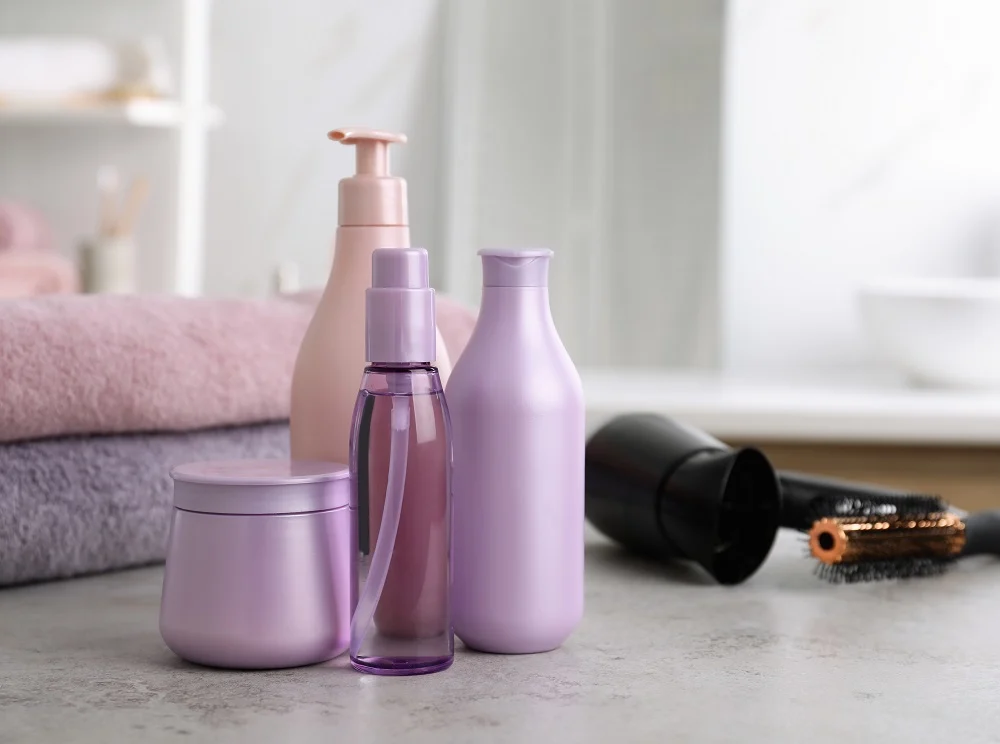
Use the right products on your bleached/lightened hair. Because your hair needs a little extra care, you might not be able to get by with the products you were using before. Here are a few suggestions to keep in mind when choosing your hair products:
Use a sulfate-free shampoo
Sulfates dry out your hair and strip it of its natural oils. This can be beneficial for an occasional deep cleanse but should not be used regularly or even weekly when your hair has been bleached or lightened. I suggest using a moisturizing shampoo that doesn’t contain sulfates.
If you feel that your hair needs a deep cleanse, there are shampoos on the market that are naturally clarifying but don’t contain sulfates. Charcoal and apple cider vinegar are just two examples of natural clarifiers.
Choose a protein and moisture-rich conditioner
The conditioner you choose can make or break your lightened hair. Use a conditioner that is rich in moisture and also contains a protein like keratin to strengthen your hair.
Also, let your conditioner soak in for several minutes before rinsing it out with cool water. Rinse out your conditioner with cool water because it will seal the moisture from the conditioner into your hair. Hot water will just rinse all the conditioner right out of your hair without sealing in as much moisture.
Use styling products that are moisturizing and strengthening
Before you apply styling products, apply a strengthening leave-in conditioner to your hair. After that, add your styling products, but they shouldn’t contain alcohols other than fatty alcohols. (Cetearyl, cetyl, and stearyl alcohols are considered fatty alcohols.)
Also, if you are going to use hairspray try to use a spritz hairspray instead of an aerosol hairspray. Aerosol hairsprays contain chemicals that may be damaging to your hair as well as the ozone layer.
#3. Nourish and Repair Your Bleached Hair
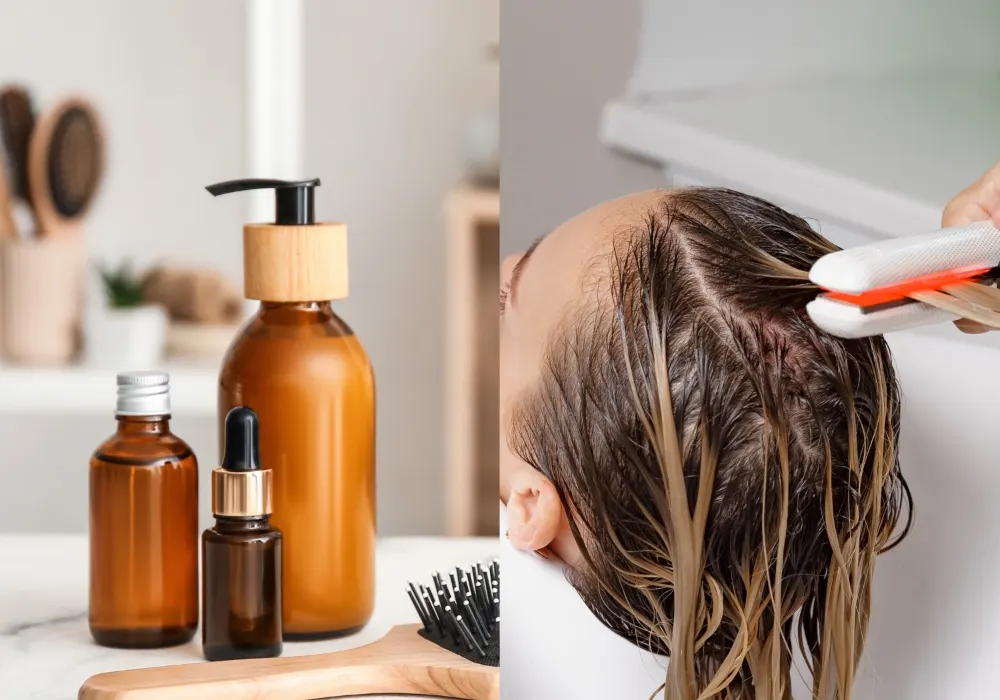
Any chemically processed hair deserves a little extra TLC. If your hair is bleached/lightened, don’t skip your regular hair treatments. These hair treatments can be done in a salon but they are much more cost-efficient when done at home.
There are two main types of hair treatments: moisture treatments and protein treatments. Sometimes you can find a hybrid of both but let’s discuss each one separately.
Moisture Treatments
Moisture treatments are highly beneficial for maintaining healthy, moisturized hair. These treatments are especially crucial if you live in a dry climate and have chemically processed or bleached hair.
Moisture treatments contain certain oils, humectants, and other substances that add moisture to the hair while helping to seal the outside of the hair cuticle. They give the hair a smooth, shiny finish.
If your hair is looking greasy or weighed down, this may be a sign that the treatment you’re using is too heavy or that you are applying it too often. You may also consider balancing your moisture treatments with protein treatments.
Protein Treatments
Protein treatments strengthen the hair and are ideal for people who have damaged or bleached hair.
When our hair is chemically processed, its composition is broken down and altered. Protein treatments help to build the strength of the hair back up.
You can think of it this way: When you go to the gym or exercise, your muscles are being broken down, and by feeding your body protein, you can rebuild them, making them stronger. Protein treatments have a similar effect on our hair.
There are several different types of protein that you will notice in protein treatments, but the most beneficial is keratin.
Keratin is the protein that naturally occurs in our skin and hair, so the hair easily absorbs and strengthens incredibly.
However, it’s possible to overdo it with protein treatments. If your hair is starting to feel dry or a little too “tough,” you may want to balance it out with a moisture treatment.
#4. Get Regular Trims for Your Bleached Hair

If you are trying to grow out your beautiful highlighted locks, trimming them may not sound very appealing but trimming your bleached hair is an important part of maintaining it. Chemically processing your hair will always cause some damage, even if you take good care of it.
In fact, even hair that isn’t bleached or chemically processed can be damaged by a variety of other factors and still needs to be trimmed regularly.
If you want to maintain the sleek appearance of your beautifully highlighted hair and keep it healthy at the same time, regular trims are a must. Split, damaged ends are basically dead weight and by keeping them around you are only wasting valuable product and time.
When you get a trim, the split ends should be cut off entirely. If you don’t remove the entire split end, the hair will only continue to split.
For the best results, ask your stylist to trim your hair about every eight weeks. Even just a little trim can go a long way in maintaining the health and appearance of your bleached/lightened hair.
How to Apply Protein or Moisture Treatment to Your Bleached Hair?
Before you apply a hair treatment, read the directions on the bottle/jar. Some hair treatments need to be washed out with shampoo and others only need to be rinsed out with water. The steps below are simply a general guide to applying any hair treatment.
- Cleanse your hair thoroughly. Clean hair will be able to soak in all of the good moisture and/or protein that you are about to apply. Be sure to shampoo your hair more than once in order to eliminate any buildup before applying your treatment.
- Gently squeeze the excess water out of your hair.
- Apply a generous amount of the treatment to your hair, starting at your ends and working your way up to your roots. You want your hair to be completely saturated.
- Gently comb or brush the treatment into your hair using a wide-toothed comb or a detangling brush. A brush designed specifically for detangling wet hair is best. Start at the ends and work your way up to the roots.
- Cover your hair with a plastic cap. This will keep all of the moisture exactly where you want it.
- (Optional) Use a sit-in hair dryer or a special attachment for your blow dryer to add heat to your treatment for 10 minutes to 20 minutes. Ensure the setting isn’t too hot so you don’t scald your scalp. Also, ensure that the plastic cap stays on your head the whole time so the treatment doesn’t dry out.
- Rinse out the treatment with cool water. Wash your hair with cool water instead of hot water to seal the moisture and/or protein into the hair. (Check the directions on the bottle to see if the treatment you used has to be washed out with shampoo first. If so, shampoo your hair and then apply a light conditioner.)
Quick Tips for Maintaining Bleached Hair Color
- Use Purple Shampoo Wisely: It helps stave off brassiness, but overuse can alter your blonde color.
- Install a Shower Filter: It helps keep water impurities from damaging your blonde hair.
- Use Hair Oil: A high-quality clear oil can penetrate deep into the hair cuticle for ultimate repair.
- Use the Right Towel: Microfiber towels can help reduce frizz and damage, especially for hair prone to breakage.
- Invest in a Bond Builder: Products like Olaplex can rebuild and reverse damage and breakage.
- Start with the Right Shampoo and Conditioner: Alternate between sulfate-free protein-rich and moisture-rich formulas.
- Use Multi-Tasking Formulas: Look for products that provide multiple benefits, like detangling and heat protection.
- Stretch Out Washes With Dry Shampoo: This will help maintain hair’s integrity during the first few weeks after treatment.
- Limit Heat Styling: Overuse of hot tools can cause additional damage to bleached hair.
- Protect Hair from Sun: Use products with UV protection to prevent color fading and drying.
- Sleep on a Silk Pillowcase: It can reduce hair stretching, pulling, and breaking.
- Maintain Conditioning Routine: Bleach dries out hair, so make sure to replenish it with hydrating conditioners and masks.
Bleached Hair Dos and Don’ts
So based on the hair care steps and quick maintenance tips here are the dos and don’ts for bleached hair:
Dos:
- Use a silk pillowcase and a microfiber towel to minimize hair damage.
- Install a shower filter to eliminate harmful substances from water.
- If bleaching results are unsatisfactory, wait for a few weeks before re-bleaching.
- Apply deep-penetrating hair oils and quality hair masks for hydration.
- Use sulfate-free, protein-rich, moisturizing shampoos and conditioners.
- Use a leave-in treatment serum for extra nourishment.
- Buy multipurpose hair products for added shine, detangling, and heat protection.
- Use a purple shampoo to eliminate brassy tones but wait two weeks after bleaching to start using.
Don’ts:
- Avoid excessive bleaching to prevent intense hair damage.
- Do not skip haircuts and let ends become dead and dry.
- Avoid tying hair too tight to prevent breakage.
- Do not shower with hot water as it can strip natural oils from your hair.
- Avoid excessive sun exposure, which can weaken and dry out hair.
- Do not brush hair when wet; it’s more prone to breakage.
In Summary
Bleached or highlighted hair is definitely trending as we approach summer and is honestly just as beautiful all year round.
If you are contemplating getting your hair bleached/lightened, make sure you are ready to put in a little extra maintenance to keep it looking and feeling its best. If you have already bleached your hair, the tips above can help you take care of your beautiful bleached hair.
